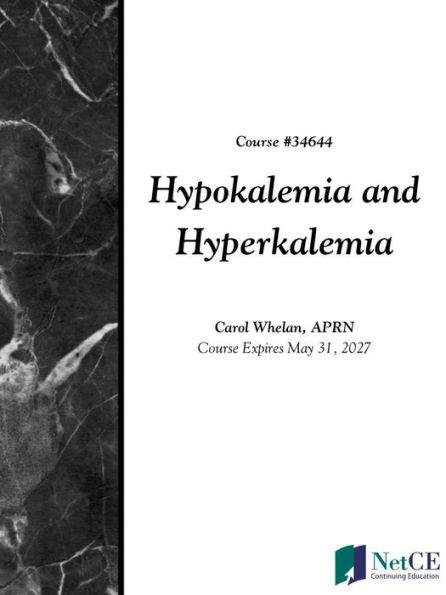Hypokalemia and Hyperkalemia
The purpose of this course is to provide healthcare professionals with the information necessary to identify hypokalemia or hyperkalemia early and intervene to prevent long-term adverse effects. In addition, members of the public may use this course to enhance their personal knowledge of the subject matter presented.
Upon completion of this course, you should be able to:
1. Define hypo- and hyperkalemia.
2. Analyze the pathophysiology of hypo- and hyperkalemia.
3. Accurately diagnose patients with potassium imbalances using the appropriate laboratory testing.
4. Describe the management and referral of patients with hypo- or hyperkalemia.
5. Evaluate special topics related to a presentation with potassium abnormalities, including Addison disease, renal tubular acidosis, and hyperaldosteronism.
This 4-hour continuing education course is available for download for professional development; if continuing education credit is desired, please see instructions included in eBook.
1122061248
Upon completion of this course, you should be able to:
1. Define hypo- and hyperkalemia.
2. Analyze the pathophysiology of hypo- and hyperkalemia.
3. Accurately diagnose patients with potassium imbalances using the appropriate laboratory testing.
4. Describe the management and referral of patients with hypo- or hyperkalemia.
5. Evaluate special topics related to a presentation with potassium abnormalities, including Addison disease, renal tubular acidosis, and hyperaldosteronism.
This 4-hour continuing education course is available for download for professional development; if continuing education credit is desired, please see instructions included in eBook.
Hypokalemia and Hyperkalemia
The purpose of this course is to provide healthcare professionals with the information necessary to identify hypokalemia or hyperkalemia early and intervene to prevent long-term adverse effects. In addition, members of the public may use this course to enhance their personal knowledge of the subject matter presented.
Upon completion of this course, you should be able to:
1. Define hypo- and hyperkalemia.
2. Analyze the pathophysiology of hypo- and hyperkalemia.
3. Accurately diagnose patients with potassium imbalances using the appropriate laboratory testing.
4. Describe the management and referral of patients with hypo- or hyperkalemia.
5. Evaluate special topics related to a presentation with potassium abnormalities, including Addison disease, renal tubular acidosis, and hyperaldosteronism.
This 4-hour continuing education course is available for download for professional development; if continuing education credit is desired, please see instructions included in eBook.
Upon completion of this course, you should be able to:
1. Define hypo- and hyperkalemia.
2. Analyze the pathophysiology of hypo- and hyperkalemia.
3. Accurately diagnose patients with potassium imbalances using the appropriate laboratory testing.
4. Describe the management and referral of patients with hypo- or hyperkalemia.
5. Evaluate special topics related to a presentation with potassium abnormalities, including Addison disease, renal tubular acidosis, and hyperaldosteronism.
This 4-hour continuing education course is available for download for professional development; if continuing education credit is desired, please see instructions included in eBook.
0.0
In Stock
5
1

Hypokalemia and Hyperkalemia

Hypokalemia and Hyperkalemia
eBook
FREE
Related collections and offers
0.0
In Stock

Product Details
| BN ID: | 2940185949115 |
|---|---|
| Publisher: | NetCE |
| Publication date: | 06/01/2024 |
| Sold by: | Barnes & Noble |
| Format: | eBook |
| File size: | 226 KB |
From the B&N Reads Blog
